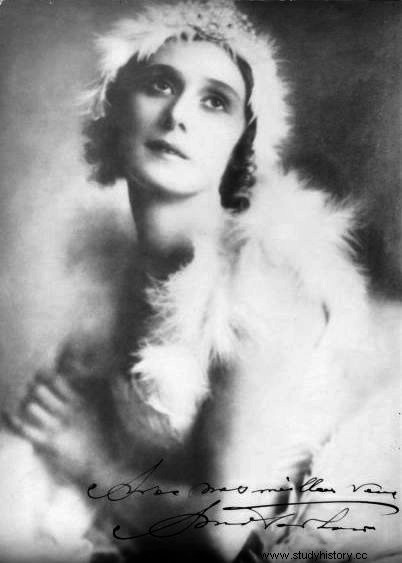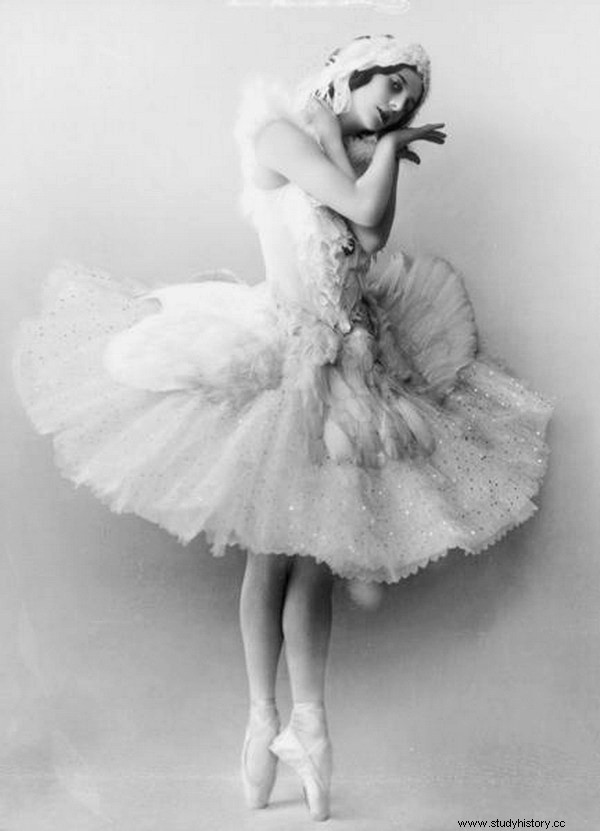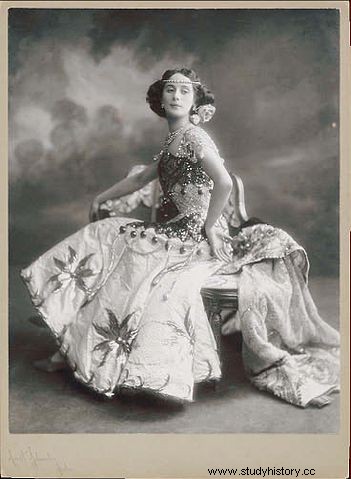Anna Pavlovna (Matveyevna) Pavlova (1881 – 1931) was a Russian ballerina, best known for her role in the ballet created for her, La Mort du cygne . Considered one of the best classical dancers of all time, she was the first to tour the world with her own company.
Sleeping Beauty

Anna Pavlovna (Matveïevna) Pavlova was born on February 12, 1881 in Saint Petersburg, Russia, into a modest family. His mother, Lyubov Feodorovna, is a laundress and a single mother; his father is not known. When Anna is three years old, Lyubov marries Matvey Pavlov who adopts his daughter and gives her his name.
When she was still a child, Anna attended one of the first performances of the ballet La Belle au bois dormant with her mother. , choreographed by Marius Petipa. The spectacle, magnificent, fascinates her; his passion for ballet was born.
A fairy tale
At nine, considered too young and “sickly” looking, Anna Pavlova was refused entry to the Imperial Ballet School; she will be accepted there the following year. His early years of training were tough. Her arched feet and long slender legs did not correspond to the ideal dancer's body of the time; the relations between the young dancers are not always tender, and some of her comrades make fun of her.
Anna is undeterred. From her first year, at age ten, she appeared in Petipa's ballet A fairy tale, presented by the students of the school in 1901. She trains hard and takes private lessons with great teachers of the time. Enrico Cecchetti follows her particularly; she will even become his only pupil between 1906 and 1908.

The Death of the Swan
Anna Pavlova completed her training in 1899 and entered the Imperial Ballet as coryphée , a cut above the corps de ballet . From its first performances, in Les Dryades pretendes by Pavel Gerdt's, critics hailed his performance. Her style is sometimes unacademic and her weak ankles cause her difficulties, but she dances with enthusiasm, passion and energy.
Her talent allows her to rise quickly and become one of Petipa's favorites. In 1901, Anna replaced the dancer Mathilde Kschessinska on stage in La Bayadère; Afraid of being replaced, Mathilde coaches her for the role, convinced that she will fail because she is not muscular enough. The reverse happens; audiences and critics alike acclaimed Anna's performance, which proved to be an undeniable success. She is named dancer in 1902, first dancer in 1905 and finally star dancer in 1906.
In 1905, the choreographer Michel Fokine created for her the role La Mort du cygne, inspired by the Cygne , thirteenth movement of the Carnival of the Animals by Camille Saint-Saens. Her interpretation of this solo of a few minutes makes her truly become a legend; Anna is said to have performed it approximately 4,000 times.
Anna's company
In 1908, Anna Pavlova founded her own company and embarked on international tours, mainly performing works by Petita or pieces choreographed for her. She choreographs some solos herself.
From 1912, Anna moved to England, where she lived until the end of her life. She helped to develop British ballet there. Anna is also very dedicated to organizing charity shows, especially in favor of Russian orphans in Paris after the First World War. She buys a house in Saint-Cloud to settle fifteen girls there, and raises funds for their education.
If I can't dance...

On tour in The Hague in 1931, Anna learns that she has acute pneumonia and that her condition requires surgery that could end her career. She then refuses the intervention, saying "If I can't dance, I'd rather be dead".
Anna Pavlova died of pleurisy on January 23, 1931. Her last words would have been to claim her swan costume.
